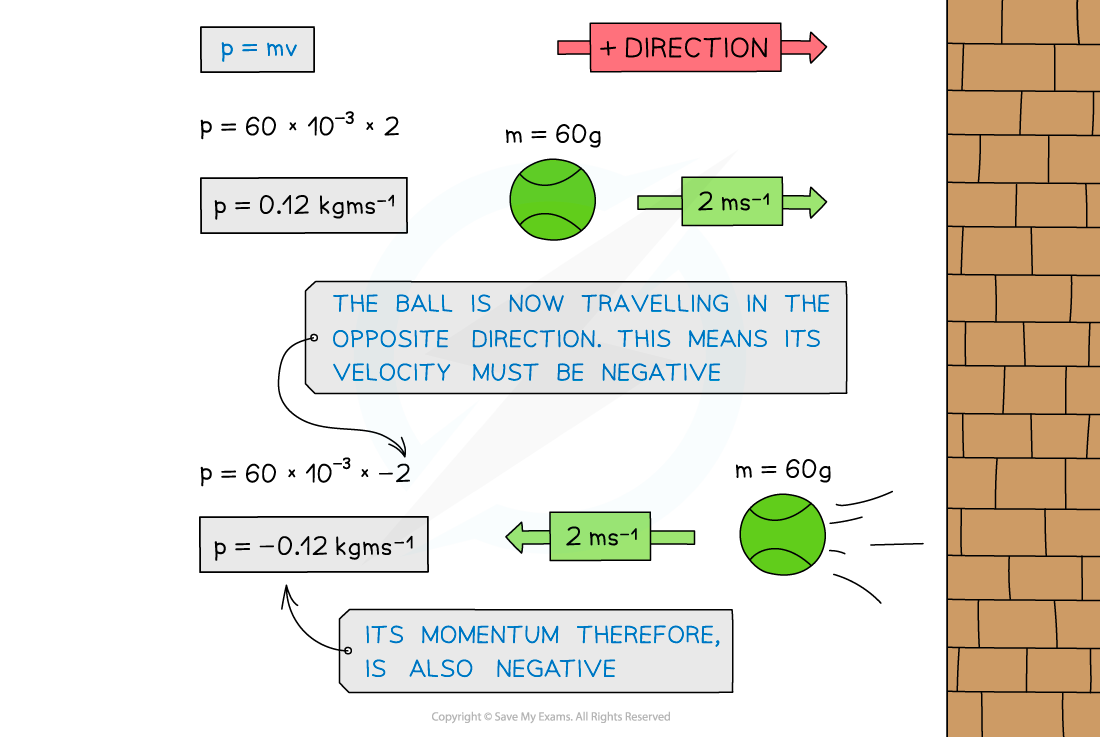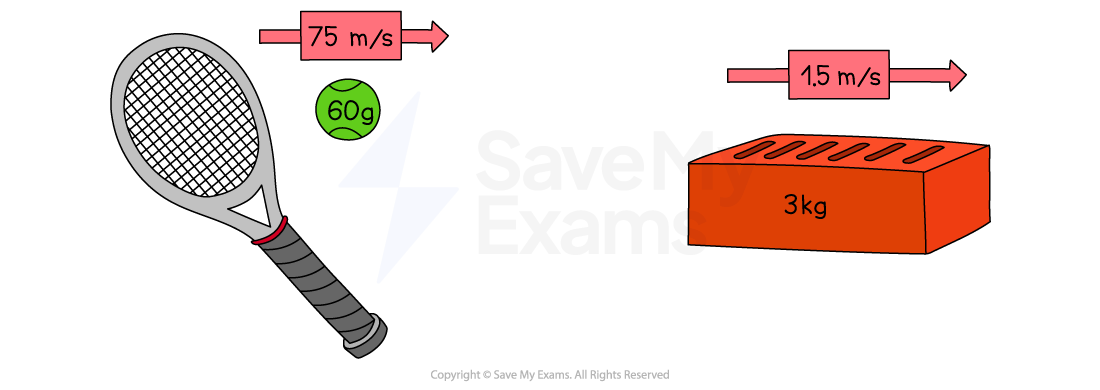Momentum (WJEC GCSE Physics): Revision Note
Exam code: 3420
Momentum
A moving object has momentum which is defined by the equation:
Where:
p = momentum in kilogram metre per second (kg m/s)
m = mass in kilograms (kg)
v = velocity in metres per second (m/s)
This means that an object at rest (i.e. v = 0) has no momentum
Momentum keeps an object moving in the same direction
It is difficult to change the direction of an object with a large momentum
Since velocity is a vector the momentum of an object also depends on its direction of travel
This means momentum can be either positive or negative
If an object travelling to the right has positive momentum, then an object travelling in the opposite direction (to the left) will have negative momentum
This isn't a solid rule, but in questions, usually the positive direction is to the right and negative to the left
How does the momentum of a ball change after a collision?

The momentum of the tennis ball is positive as it approaches the wall and negative after the collision as it moves in the opposite direction
Worked Example
Determine which object has the most momentum, the tennis ball or the brick.
Explain your answer.

Answer:
Step 1: Calculate the momentum of the tennis ball
p = mv
p = 0.06 × 75
p = 4.5 kg m/s
Step 2: Calculate the momentum of the brick
p = mv
p = 3 × 1.5
p = 4.5 kg m/s
Step 3: Explain your answer
Both the tennis ball and the brick have the same momentum
Even though the brick has a much greater mass than the ball, the ball is travelling much faster than the brick
This means that on impact, they would both exert a similar force (depending on the time it takes for each to come to rest)
Examiner Tips and Tricks
Remember the units of momentum as kg m/s which is the product of the units of mass (kg) and velocity (m/s).
Which direction is taken as positive is completely up to you in the exam. In general, forwards, to the right, and upwards are taken as positive, and backward, to the left, or down are taken as negative.

Unlock more, it's free!
Did this page help you?